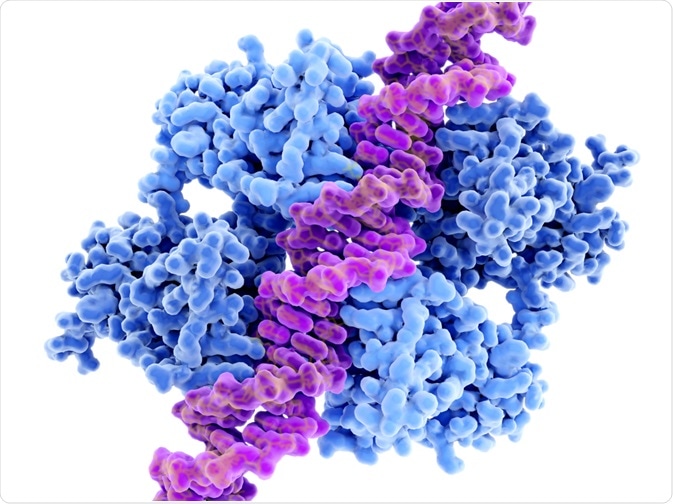The transcriptome is the full set of messenger RNA (mRNA) a cell has transcribed. Analyzing the transcriptome shows the genes which are being actively expressed and can therefore yield highly informative results for biologists.

Image Credit: Juan Gaertner / Shutterstock
Next-generation sequencing for transcriptome analysis
Limitations of previous methods
Microarrays were the customary method for transcription analysis, but it faced several drawbacks, such as hybridization issues, detection issues, and constraints on mapping previously unmapped genes. These limitations have restricted analysis of all genes in a large genome and detection of uncommon but physiologically relevant genes in the transcriptome.
Predicting cell function
The transcriptome can give us information about what the cell is actively doing or will do in the future. It also specifies the identity of a cell.
The finding and annotating of the transcriptome in tissues elucidates which genes are being expressed, and their tentative function.
This was initially attempted in simpler organisms, such as yeast, but has been applied to different tissues present in plants and mammals.
cDNA sequencing
One NGS technique used to characterize transcriptome is cDNA sequencing. This method allows for RNA, or mere presence, to be stored and used for comparison with other samples or future samples.
The sequencing can be done on different tissues from one organism to compare and discover tissue-specific expression patterns.
Applications of transcriptome analyses
Studying gene regulation
Tissue-specific transcriptome analysis via NGS technology has been attempted on a number of organisms of varying complexity.
One of the more ambitious projects was done on mice, where liver tissue, skeletal muscle tissue, and whole brain tissue was analyzed.
This extended our current understanding by providing information for a better model of genes in the mouse genome, as well as how these differ by tissue type.
Among these discoveries were new or elongated 5’ exons, which are key markers of promoters. This is useful to investigate genes regulation and interactions between regulating factors.
Detecting splicing events
Key with using the NGS RNA sequencing method rather than microarrays was the detection of splicing events. Splicing events occur as the newly transcribed mRNA matures into mature mRNA.
Microarrays can only detect splicing events during customized conditions, and not during routine use. However, NGS can detect in high abundance RNAs.
Scientists are now looking to further characterize these splicing events and their forms by using other forms of RNA sequencing technology.
Ageing research
One theory in the field of is about dietary restriction, where consuming less food without being malnourished can extend the lifespan while reducing fitness in youth.
The responses by the transcriptome to dietary restriction have been studied at the cellular and organismal level, but only recently at a tissue level.
Dietary restriction is believed to work through Target of Rapamycin (TOR) signaling, through essential amino acids which can up-regulate TOR.
Analyzing tissue-specific transcriptomes in Drosophila confirmed that one of the effects of dietary restriction is reduced TOR signaling, in addition to confirming a role for GATA family factors as regulators.
The tissues responded separately to dietary restriction, specifically via GATA factors.
The finding that the tissues respond independently to dietary restriction implies that tissue-specific genetic manipulation can allow the life length to be extended while avoiding the fitness reductions.
Plant research
Plant science is also using the developments in NGS and RNA sequencing to further understand plant growth and response to the environment.
Plants rely heavily on their ability to respond and adapt to their environment, since they cannot change it or move away from it. Salt stress is one such environmental stress with severe effects on growth and reproduction.
Tissue-specific transcriptome analysis was applied to Populus euphratica seedlings, a type of willow tree. They found 2000-6000 differentially expressed genes in the leaf, phloem, xylem and root tissues.
The differentially expressed genes during salt stress differed between tissues, relating to membrane transport activity in the leaf and oxidation-reduction processes in the root tissue.
It was also suggested that divergence of the expression patterns of the differentially expressed genes can improve tolerance to salt stress by maintaining homeostasis of ions and reactive oxygen species.
Further Reading